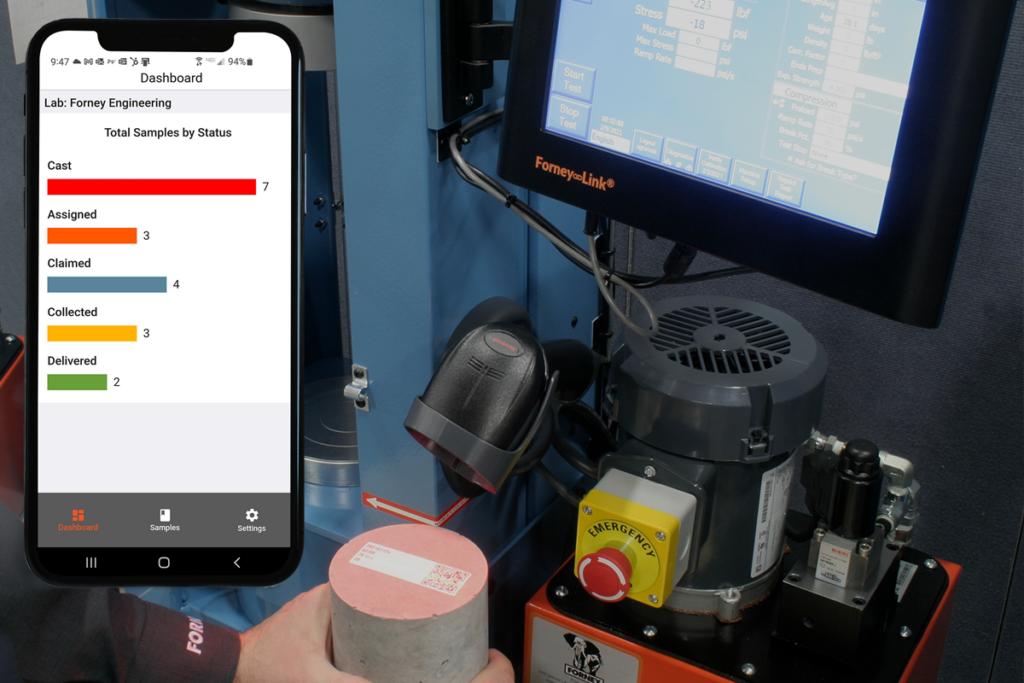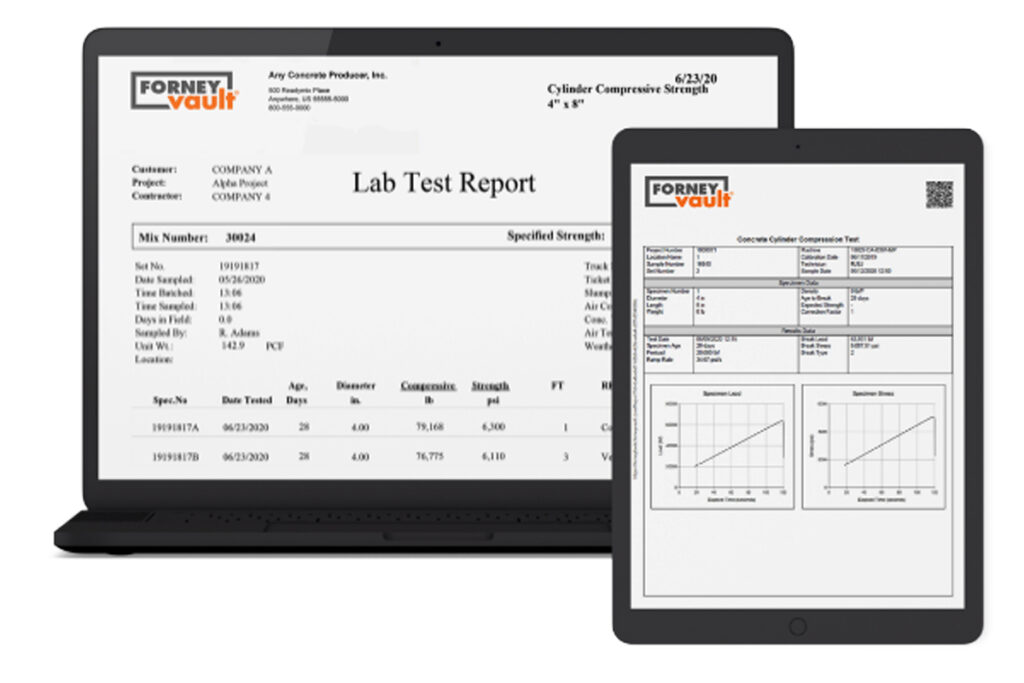LIMS software is not just for large CMT labs. For smaller labs that direct engineering or construction consulting and materials testing, it’s important to find a solution that helps your lab efficiently conduct operations and maintain compliance. Discover everything you need to know about choosing a LIMS to support your laboratory.
A laboratory information management system (LIMS) is software designed to improve lab productivity and efficiency by managing critical workflows and keeping track of vital data. This solution can span many different types of labs and functional areas, including:
- Research and development laboratories
- QA/QC validation laboratories
- Material testing laboratories
- Process development and manufacturing laboratories
- Bioanalytical laboratories
In the case of testing construction materials and managing entire (or multiple) projects, a LIMS software is an essential part of automating workflows and tracking important sample information and test results that your lab generates every day. But to truly automate your construction workflows, not just any LIMS will cut it.
In this blog, we will answer a number of questions about choosing a LIMS vendor, including:
- What’s the difference between a LIMS and LIS?
- What are the most important features of LIMS for small labs?
- What are the advantages and disadvantages of LIMS software?
- How much does a LIMS cost?
Use this as a practical buyer’s guide when your small lab is ready to automate.
#1. What’s the Difference Between a LIMS and LIS?
First things first, when you’re looking for a solution to better track data and maintain compliance, you might stumble across a similar yet different solution: a laboratory information system (LIS).
A LIS is more commonly found in the healthcare and clinical space, tracking individual patient records as they relate to lab testing and processes. Meanwhile, a healthcare LIMS focuses more on samples as a whole, not specific patient data.
Of course, these healthcare applications are not what you need in the construction industry. When you’re seeking a LIMS for your small lab, be mindful of the solution terminology and target industry. A “laboratory” can mean a lot of things across a number of industries. You want a LIMS designed specifically for construction materials testing labs.
To further differentiate construction LIMS from healthcare-related LIS and LIMS (and other, lesser construction LIMS software), let’s explore key features that your LIMS must have.
#2. What Are the Most Important Features of LIMS for Small Labs?
Small CMT labs don’t need all the bells and whistles of enterprise-grade construction LIMS software. But there are a few key features that your LIMS should include to really make a difference in your workflow – from the field to the lab office and beyond.
Integration Capabilities
The most important feature is that your construction LIMS allows for an open system. To eliminate human error and redundancy from manual data entry, sample information from the field and test results from the lab should automatically flow into your LIMS. That way, you can view unalterable results in a secure, central location – and trust that the results are what they’re supposed to be. From there, you can customize reports and export data to key stakeholders.
Look for a LIMS with open integration capabilities. If you can’t get results automatically, your workflow will be more vulnerable to human error and bias – and the LIMS won’t provide the benefits it promises.
Mobile Field Application
Speaking of sample information from the field: Your LIMS of choice should come with a mobile field application that enables a truly end-to-end CMT workflow.

A mobile field app fully closes the data gap, allowing field technicians to create, claim and locate samples onsite and sync field reporting data back with your lab. This is essential – but not every LIMS will provide this functionality, especially if the LIMS isn’t specialized in the construction industry.
Automatic Alerts & Notifications
Before construction projects can move forward, lab engineers and technicians need to first test and approve the materials in use. To fully automate this process, your LIMS should provide automatic alerts and notifications.
These alerts are not only automatic but also proactive, helping your lab get ahead of any potential problems. With automated and actionable alerts, small test labs are able to efficiently respond to results and deliver timely strength reports that keep projects moving forward and materials in compliance.
Digital Reporting Approval Workflow
From generating and reviewing reports to routing reports for review and approval, the report management aspect of the construction workflow is critical. Without these reports, you can’t verify material strength and specifications.

The problem: Many labs large and small still follow a mostly manual process for report approval – relying on standalone PDF forms or paper. This process is tedious, time-consuming and vulnerable to human error, but it’s arguably the most important part of the construction workflow. So, why not find a construction LIMS that offers a digital reporting approval workflow?
This feature makes the report approval workflow as simple and streamlined as electronically updating the status on a report file and then reviewing and approving that report in a central repository.
#3. What Are the Advantages and Disadvantages of LIMS software?
The features above point to great advantages of LIMS software for CMT labs, including:
- Automation
- Compliance with regulatory standards
- Enhanced efficiency
- Enhanced productivity
- Analytical accuracy and the ability to see trends
- Central source of truth for CMT data
Implementing a LIMS gives small CMT labs the ability to log, track, record and report on samples and specimen data in a methodical, consistent way. A LIMS not only provides the resources for a laboratory to remain organized but also facilitates efficiency, transparency and compliancy throughout the organization. Using a LIMS at your laboratory will automate tedious tasks and create more time for what’s important.
We would be remiss to not highlight the few disadvantages of using a LIMS as a small lab. To make the best decision for your lab, here are the two main disadvantages:
- Implementation & training
- Cost
The main disadvantages of using a LIMS revolve around training and system complexity. Upon implementing a LIMS, all employees will need adequate training so they can use the system to complete tasks. Every LIMS has a learning curve, and it will take some time for all staff to get acquainted with the system.
As a small lab, you might not have the budget for an enterprise-grade LIMS. That’s why you need to find the right solution designed specifically for small labs.
With that being said, it’s important to note that these disadvantages remain small in comparison to the benefits a LIMS will bring to your laboratory. When thinking about the future and putting a long-term plan into action, implementing a LIMS is the only way to modernize and advance in the construction industry.
#4. How Much Does a LIMS Cost?
Finally, the million-dollar question.
The cost of laboratory information systems and the laboratory equipment used in construction materials testing can vary.
Luckily, for small labs, there are LIMS solutions out there that don’t require a major investment. You may only need a couple of connected devices for your LIMS system software at a smaller testing facility. A smaller testing setup means lower initial costs and annual upkeep expenses.
For example, ForneyVault, an integrated construction materials testing software, includes a free LIMS for small labs that don’t have their own. For as little as $1,250 per year, you can have access to modern LIMS capabilities – without significant overhead.
Conclusion
With so many LIMS vendors and industries using some variation of a LIMS, choosing the right LIMS for your small CMT laboratory might seem daunting. But if you prioritize core components your laboratory needs and your budget, you will be able to find the best solution that meets your needs.
No LIMS? No problem. ForneyTools helps you securely access, analyze and report on Forney Vault testing results – without added overhead. See how it works by requesting a demo today.